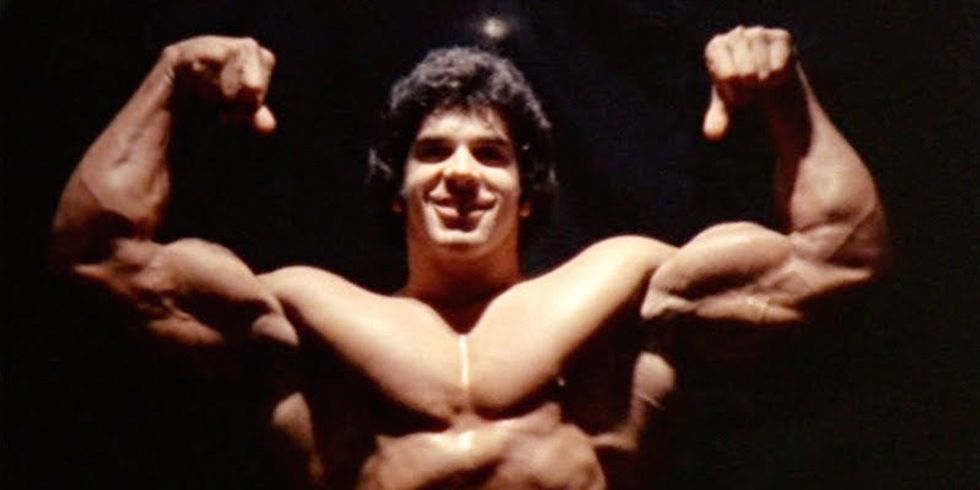Prep-Tober, as I have come to know it, are the steps one takes in October to prepare for writing a novel in November (or any month). I first came upon this terminology in Rachel Stephen’s video, which described what she will be doing to prepare for National Novel Writing Month (NaNoWriMo) in November. Since seeing that video, I have become aware that it is a common term for describing to prepare for such an obstacle as writing a novel in a month. It made me think about the many different methods on constructing and preparing a novel. The intention of this article (and the other ones in the series) are to help elaborate on different techniques to prepare to write for those individuals attempting their first novel, or for those who are looking to try a new method. You can also check out the previous weeks' articles on plotting methods and world-building. This week’s issue of my "Guide to Prep-Tober" will focus on characters.
Get to know your characters.
Know their motives.
Strong characters are the backbone to an immersive story. You can have a completely brilliant or horrifying world created, but if the characters fall flat, so will the story. A character’s dynamic presence in the story can change the fate of the plot entirely since they move throughout the story based on their motives. Knowing a character’s motives can alter the plot because different motives and characteristics will produce different results. For example, if one character wants to become the best hacker in the world, they will act differently to an extraterrestrial uprising than someone who is a stunt double bent on making enough money to support their ailing parents. The hacker might try and access the alien’s database or go completely off the grid, whereas the stunt double would make sure their family and others are safe before themselves. Knowing what drives your characters in their day-to-day lives will allow you to know how they would react to situations that disrupt that life.
Know their flaws.
Think of characters as actual people. I know that sounds a bit strange; these are figments of your imagination, right? Shouldn’t they stay there? Yes and no. Characters who closely resemble people in their actions and personalities will become more relatable to the reader. Readers tend to relate to even the most unrelatable characters, like Loki in the “Avengers” series, or Hannibal from the series “Hannibal,” or even Regina (also known as the Evil Queen) in “Once Upon a Time.” These characters don’t exactly have a perfect moral compass, to say the least, but fans continue to be drawn to them. This doesn’t mean that the fans see themselves completely in these characters. They seem real or “three-dimensional” in that they leap off of the page (or, in these examples, jump out of the screen). Even having one flaw or “negative” quality to a character, no matter how big or small, can make the biggest difference in breathing life into your characters.
Identifying your characters.
Main, secondary, and tertiary characters.
Don’t worry, though. Not all of your characters need to be completely figured out. Focusing more of the character understanding on main characters and secondary characters will help your story, whereas you don’t need to spend too much energy figuring out tertiary characters. One way to think about it is to picture it like a road trip:
- Main characters: These are the characters who are throughout the majority, if not the whole, story. They will have the largest impact on the story because it is their story that is being told. You would want to know as much as possible about these characters to make them seem the most lifelike and know how they would react to different decisions. In the road trip analogy, these would be the individuals embarking on the road trip. Would they take the side detour to Anaheim, California, or would they go straight to Las Vegas with no stops? Why are they taking this road trip? Are they running from someone or something? Or have they planned out this trip for five years, earned enough money, and decided to leave the state for the first time in their life? The next step would be to see how the plot interrupts their motives and how they handle that situation. For example, what if they got accidentally dragged into a bank robbery -- how would they react to that?
- Secondary characters: These characters are recurring to the story line but aren’t necessarily joining the main character on their journey. You will want to know a decent amount of knowledge about these characters, but not nearly as detailed as the main characters. You should know what drives them and what is getting in their way. In the road trip analogy, these could be the bank robbers who interrupted our main character’s road trip. They may come back again, enact revenge for getting turned in, or they may join the story for awhile and then run when the cops are catching up with this unusual group. For these characters, you want to know how they impact the main characters and how their actions either help or hurt the main characters.
- Tertiary characters: These characters only show up about once or twice in your story. You don’t need to know much about them, unless you want to. They are meant to have a purposeful impact on the story while not taking it over. Going back to the road trip analogy, this character might be the gas station worker who sees the newly made bank-robbing group and call the police, letting them know the main character’s position. This character’s actions could either get the main character caught or cause them to return on the road and change their initial journey. This character can either impact a character’s thoughts on certain situations happening in their life, or it can impact the plot, depending on how you want to utilize them.
Misconceptions about strong characters.
Some people confuse “strong characters” with physically strong characters. This is most notably seen in the strong female characters. While I am all for ladies who fight and don’t take anyone’s nonsense, it is also nice seeing the other side of the spectrum with ladies who are also vulnerable. This also goes back to men, who aren’t always shown in a vulnerable state. 'Strong characters' mostly refers to characters who are believable and real to the readers. Let your characters have insecurities and push them to the breaking point. Thinking of your character as a person will help you to know how to push them and how to show the spectrum of their emotions, and will make the character have a stronger presence within the story.
Character types.
There are many character types, and these are only some of the ones out there. If you would like more examples, or even a deeper analysis of the role these characters have throughout the story, feel free to check out these links.
- Protagonist: The protagonist is the star of the show, also known as the main character. Going back to our alien invasion example, this would either be the hacker or the stunt double. This person is the hero/heroine of the story.
- Antagonist: The antagonist is the person who stands against the protagonist. In the alien example, it could either be the aliens or, if we are using the stunt double as the protagonist, a rival actor. The great thing about antagonists is that there can be more than one. Think of “Harry Potter and the Order of the Phoenix,” where the antagonists were Draco Malfoy, Dolores Umbridge, and Voldemort.
- Foil: A foil character is one who is used to highlight certain characteristics of a character; in most cases, they are trying to highlight the protagonist’s characteristics. A foil is tricky because they can either be very similar to the protagonist with several small differences, or they can be completely different. This differs from the antagonist because it is an opposition in character with the protagonist rather than a direct opposition.
- Narrator/Viewpoint character: Narrators and viewpoint characters can be the same character or be completely different. For example, Katniss Everdeen is the narrator and viewpoint of “The Hunger Games,” but there is a separate narrator for the television show “Jane the Virgin.” The narrator is the person telling the reader the story, whereas the viewpoint character is who the reader is following in the story. The viewpoint character can change depending on how many points of view you have throughout the story. For example, maybe the hacker met the stunt double in the alien invasion example, and the hacker was narrating the story of the stunt double’s untimely end while protecting their family.
- Static: A static character is someone who doesn’t change throughout the story. This works for secondary characters with a smaller presence, or tertiary characters, but generally their lack of character growth is to show the character growth of another character.
- Dynamic: A dynamic character is someone who goes through great inner change through the story. In the example with the alien invasion, maybe the hacker is our dynamic character – they became more passionate about helping the human race through the chance encounters with the stunt double, and were motivated to help the planet after seeing how much the stunt double cared for life on Earth. Dynamic characters are generally, but not limited to, main characters.
Characters are the stars of the novel you want to write, and should be written in a way that makes them appear life-like to the reader. Without them, your world-building and plot wouldn’t be relevant because there wouldn’t be someone to walk along that path. Giving characters the attention to detail that they deserve will create a more immersive story that will hook the readers.
Who is your favorite character? Which character do you hate the most?













 The minimum wage is not a living wage.
StableDiffusion
The minimum wage is not a living wage.
StableDiffusion
 influential nations
StableDiffusion
influential nations
StableDiffusion











